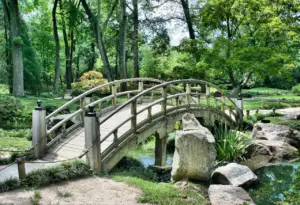Tainan, located in the southern region of Taiwan, is a city that is steeped in history and culture. As the oldest city in Taiwan, Tainan has played a significant role in the development of Taiwan’s history and economy. Over the years, the city has become a hub for cultural and historical activities, attracting tourists from all over the world.
Tainan’s historical heritage is evident in the numerous museums, cultural centers, and landmarks that are scattered throughout the city. These sites offer visitors a glimpse into the city’s rich cultural history and provide insight into Taiwan’s past.
From the National Museum of Taiwan Literature to the Confucius Temple, Tainan’s cultural and historical sites are a testament to the city’s rich heritage. This article will explore some of the most notable museums, cultural centers, and landmarks that are worth exploring in Tainan.
Key Takeaways
- Tainan played a significant role in Taiwan’s economic, political, and cultural growth and served as the political and economic center of the island during the Dutch and Qing dynasties.
- Tainan has numerous museums, cultural centers, and landmarks that offer visitors a glimpse into the city’s rich cultural history, including the National Museum of Taiwan Literature, the Chimei Museum, Anping Fort, Confucius Temple, traditional street markets, Fort Zeelandia, and the Koxinga Shrine.
- Tainan’s local cuisine is a blend of traditional Taiwanese and Hakka dishes, and visitors can find a variety of souvenirs and trinkets to take home from the city’s street markets.
- Tainan’s unique history and culture continue to fascinate and attract people from all over the world, and its historical landmarks are a significant part of Taiwan’s overall culture.
National Museum of Taiwan Literature
The National Museum of Taiwan Literature is a significant cultural institution that plays a crucial role in preserving Taiwan’s literary heritage. The museum is home to a vast collection of literary works, manuscripts, and artifacts that showcase the development of literature in Taiwan from its earliest days to the present. It serves as a repository of Taiwan’s literary history, providing visitors with a deep understanding of the country’s cultural identity and literary traditions.
Established in 2003, the museum aims to promote the appreciation and understanding of Taiwan’s literary culture. It hosts numerous exhibitions, events, and educational programs that offer visitors a comprehensive view of Taiwan’s literary history, its writers, and their works.
The National Museum of Taiwan Literature is a must-visit destination for anyone interested in learning more about the literary heritage of Taiwan and its significant contributions to world literature.
Chimei Museum
Featuring a diverse collection of Western art, musical instruments, and rare artifacts, the Chimei Museum is a must-visit destination for art enthusiasts and history buffs alike. Established in 1992 by Taiwanese entrepreneur Shi Wen-long, the museum’s collection comprises over 40,000 items, including paintings, sculptures, weaponry, and antique furniture.
The Chimei Museum is not only a treasure trove of art and historical artifacts, but it also boasts a stunning architectural design. The building’s elegant facade and spacious interiors provide the perfect backdrop for the exhibits, which are carefully curated and arranged to highlight their beauty and historical significance.
Visitors can spend hours exploring the museum’s galleries, marveling at the intricate details of each piece, and gaining a deeper appreciation for the rich cultural heritage of Tainan and the world beyond.
Here are four notable items in the Chimei Museum collection:
-
A Stradivarius violin, one of only a few in the world that are still playable.
-
A collection of antique firearms, including a 1600s flintlock pistol used by the Dutch East India Company.
-
A life-size bronze statue of Napoleon Bonaparte, created by French sculptor Auguste Rodin.
-
A 19th-century French organ, one of the largest and most ornate musical instruments in the museum’s collection.
Anping Fort
Located in the Anping District of Tainan City, Anping Fort is a significant historical site that played a crucial role in Taiwan’s maritime defense system during the Dutch colonial period. This fort was built in 1624 by the Dutch East India Company (VOC) to protect its territory from the attacks of other European powers and local pirates. The fort was known as "Fort Zeelandia"and was the most substantial fortification in Taiwan at that time. It was strategically located at the mouth of the Tainan River, which was the main gateway for trade and transportation in southern Taiwan. The fort was also used as a trading post for the VOC to conduct business with China and Japan.
Anping Fort has undergone several renovations and restorations over the years, but it still retains much of its original structure and architectural features. Today, it is a popular tourist destination and a symbol of Taiwan’s rich cultural heritage. The fort has several historical and cultural exhibits, including a museum that showcases the history of Taiwan’s maritime defense system, a collection of cannons and artillery, and a display of traditional weapons used in warfare during the Dutch colonial period. Visitors can also explore the fort’s underground tunnels and enjoy the panoramic views of the surrounding area from the top of the fort. Anping Fort is a must-visit destination for anyone interested in Taiwan’s colonial history and its role in the region’s maritime trade and defense system.
| Column 1 | Column 2 | Column 3 |
|---|---|---|
| 1. History | The fort was built by the Dutch East India Company (VOC) in 1624. It was used to protect the territory from the attacks of other European powers and local pirates. | |
| 2. Architecture | Anping Fort is a mix of Western and Eastern architectural styles. It is made of coral, oyster shells, and sand. The fort has a moat, drawbridge, and underground tunnels. | |
| 3. Exhibits | Anping Fort has a museum that showcases the history of Taiwan’s maritime defense system. It also has a collection of cannons and artillery and a display of traditional weapons used in warfare during the Dutch colonial period. | |
| 4. Tourist Destination | Anping Fort is a popular tourist destination and a symbol of Taiwan’s rich cultural heritage. Visitors can explore the fort’s underground tunnels and enjoy the panoramic views of the surrounding area from the top of the fort. | |
| 5. Significance | Anping Fort is a crucial historical site that played a significant role in Taiwan’s maritime defense system during the Dutch colonial period. It is a testament to Taiwan’s rich cultural heritage and its role in the region’s maritime trade and defense system. |
Confucius Temple
One of the most revered cultural sites in Taiwan, Confucius Temple is a testament to the country’s longstanding admiration for Confucianism and the strong influence it had on shaping Taiwanese society.
Built during the Qing dynasty in the early 18th century, the temple was initially intended to serve as a venue for Confucian studies and rituals. However, it soon became a prominent symbol of Confucianism and attracted many followers and scholars alike.
The temple’s architectural style reflects a blend of traditional Chinese and Taiwanese influences. The main hall, which houses a statue of Confucius, is adorned with intricate carvings and paintings, and is surrounded by a beautiful garden.
Visitors can explore the various buildings within the temple complex, which include a lecture hall, a library, and several pavilions. In addition to its historical significance, the temple remains a popular destination for tourists and locals alike, who come to appreciate the beauty and serenity of its surroundings.
Tainan’s Role in Taiwan’s Development
Tainan played a significant role in the development of Taiwan, contributing to the country’s economic, political, and cultural growth.
As the oldest city in Taiwan, Tainan was once the political and economic center of the island. During the Dutch and Qing dynasties, Tainan was the capital of Taiwan. It served as a hub for trade and commerce, attracting merchants from all over the world. The city’s strategic location on the southwestern coast also made it an important port for shipping goods to and from China and Japan.
Today, Tainan is home to many historical sites and landmarks that reflect its significant role in Taiwan’s development. Visitors can explore the city’s rich cultural heritage by visiting museums, temples, and other cultural centers. They can also enjoy the local cuisine, which is a blend of traditional Taiwanese and Hakka dishes.
Tainan’s unique history and culture continue to fascinate and attract people from all over the world, making it a must-visit destination in Taiwan.
Traditional Street Markets
Traditional street markets are an integral part of the local culture in this Taiwanese city, offering visitors a glimpse into the daily lives of the people and a chance to sample a variety of delicious foods and handicrafts. Tainan is home to several notable markets, such as the Tainan Flower Night Market and the Wusheng Night Market. These bustling markets are filled with vendors selling everything from fresh produce to traditional snacks, and visitors can find a wide range of souvenirs and trinkets to take home as well.
One of the most popular markets in Tainan is the Flower Night Market, which is located in the heart of the city. This market is particularly famous for its array of tasty street food, including oyster cakes, fried chicken, and stinky tofu. Visitors can also find a variety of handmade crafts and souvenirs, such as pottery, jewelry, and traditional Taiwanese clothing.
Despite the modernization of the city, traditional street markets continue to thrive in Tainan, providing a glimpse into the city’s rich cultural heritage and offering visitors an unforgettable experience.
Fort Zeelandia
Fort Zeelandia is a significant site in Taiwan’s history, serving as a Dutch outpost in the 17th century and later playing a role in the country’s politics and international relations. Today, it is a well-preserved historical landmark that attracts tourists from all over the world.
Here are some features of Fort Zeelandia that make it worth a visit:
-
The fort’s thick walls, which are made of coral and have stood the test of time, provide a glimpse into the military architecture of the Dutch colonial era.
-
The museum inside the fort displays various artifacts from the fort’s history, such as cannons, maps, and documents. It offers visitors a chance to learn about the fort’s role in the region’s history and its influence on Taiwan’s development.
-
The surrounding park is a peaceful oasis in the middle of the bustling city. Visitors can take a stroll along the meandering paths, admire the colorful flowers, and enjoy the shade of the trees.
-
The nearby Anping Tree House, a former warehouse that has been overtaken by banyan trees, is a popular spot for photo-taking and exploration.
-
The fort’s location near the Tainan Canal makes it easy to combine a visit to Fort Zeelandia with a boat ride along the canal, which offers a different perspective on the city’s history and culture.
Overall, Fort Zeelandia is a must-see attraction for anyone interested in Taiwan’s history and culture. Its unique blend of military architecture, museum exhibits, natural beauty, and nearby attractions make it a well-rounded destination for visitors of all ages.
Koxinga Shrine
The Koxinga Shrine is a significant site in Taiwan’s history, commemorating the life and accomplishments of the Ming loyalist Zheng Chenggong, also known as Koxinga. The shrine is located in Tainan, a city in southern Taiwan, and attracts many visitors each year who come to pay their respects to the famous historical figure.
Koxinga played a crucial role in Taiwan’s history in the 17th century. He led a successful military campaign against the Dutch East India Company, which had established a trading post in Taiwan. Koxinga’s victory led to the establishment of a Chinese settlement on the island, and he is revered as a national hero in Taiwan.
The Koxinga Shrine is an important cultural landmark that serves as a reminder of Koxinga’s legacy and his contributions to Taiwan’s history and culture.
Frequently Asked Questions
How much does it cost to enter each museum or landmark mentioned in the article?
The cost of entry for each museum or landmark mentioned in the article is not provided.
It is important to note that admission fees for museums and landmarks can vary depending on various factors such as age, nationality, and time of visit. Additionally, some museums and landmarks may offer free admission on certain days or for certain groups of people.
Therefore, it is recommended to check the official website or contact the specific museum or landmark for accurate and up-to-date information on admission fees.
Are there any special events or exhibitions happening at the National Museum of Taiwan Literature or Chimei Museum?
The National Museum of Taiwan Literature and Chimei Museum are two prominent cultural institutions in Tainan.
As for special events or exhibitions, the National Museum of Taiwan Literature regularly hosts temporary exhibitions that showcase various aspects of Taiwanese literature and culture. These exhibitions are often curated in collaboration with other museums or institutions, both locally and internationally.
Similarly, the Chimei Museum also hosts temporary exhibitions that feature a diverse range of art and artifacts from around the world. These exhibitions are often accompanied by educational programs and events that provide visitors with a deeper understanding of the works on display.
Overall, both museums offer a rich and engaging cultural experience for visitors to Tainan.
What is the significance of the Fort Zeelandia in Tainan’s history?
Fort Zeelandia is a significant landmark in Tainan’s history as it played a crucial role in Taiwan’s colonial past. Originally built by the Dutch East India Company in 1624, it served as a stronghold for Dutch colonizers to maintain their rule over Taiwan and control trade in the region.
However, the fort was later taken over by the Ming loyalist Koxinga in 1661, marking the end of Dutch colonial rule in Taiwan. Afterward, the fort became a symbol of resistance against foreign invaders and a site for anti-colonial movements.
Today, the fort is a popular tourist attraction and serves as a reminder of Taiwan’s complex history and struggle for independence.
Are there any guided tours available at the Confucius Temple or Koxinga Shrine?
Guided tours are available at both the Confucius Temple and Koxinga Shrine in Tainan.
The Confucius Temple, originally built in 1665, is a well-preserved example of traditional Chinese architecture and is dedicated to the memory of the great philosopher, Confucius.
Guided tours of the temple are conducted by knowledgeable guides who provide historical information and cultural insights.
The Koxinga Shrine, located in the Anping District, is a memorial to Koxinga, a famous Chinese military leader, and is also open for guided tours.
Visitors can learn about Koxinga’s contributions to Taiwan’s history, as well as view artifacts and exhibits related to his life.
These guided tours offer a valuable opportunity for visitors to gain deeper insights into the rich cultural heritage of Tainan.
Can visitors purchase souvenirs or local products at the traditional street markets and if so, what are some popular items to look out for?
Visitors to traditional street markets in Tainan can purchase a variety of souvenirs and local products. Popular items include handmade snacks such as pineapple cakes, sun cakes, and mochi. Other local products include traditional Chinese medicine, handmade pottery, and Taiwanese tea.
Visitors can also find unique handicrafts such as leather goods, woodcarvings, and goldsmithing. Additionally, the markets offer a range of traditional clothing and accessories, including embroidered shoes, hats, and bags.
While bargaining is common, visitors should ensure that they are paying a fair price for goods. Overall, traditional street markets in Tainan provide an excellent opportunity to explore the city’s local culture and purchase unique souvenirs.
Conclusion
Tainan is a city steeped in history and culture, with a wealth of museums, cultural centers, and landmarks that showcase its rich heritage.
The National Museum of Taiwan Literature is a must-visit attraction for literature enthusiasts, while the Chimei Museum boasts an impressive collection of art, musical instruments, and natural history exhibits.
Visitors can also explore the Anping Fort, Confucius Temple, and Fort Zeelandia, all of which played significant roles in Tainan’s past.
Beyond these historical landmarks, Tainan’s traditional street markets offer a glimpse into the city’s daily life and cuisine.
The Koxinga Shrine, dedicated to the famous Ming loyalist who captured Taiwan from the Dutch, is another noteworthy attraction.
All of these sites combine to create a multifaceted portrait of Tainan’s history and cultural identity.
Overall, Tainan’s historical heritage is a testament to the enduring importance of the city in Taiwan’s development.
Visitors can experience firsthand the richness of its past and the diversity of its culture through its many museums, landmarks, and cultural centers.
Whether exploring the city’s literary past or its vibrant street markets, Tainan offers a unique and unforgettable experience for all who visit.











































